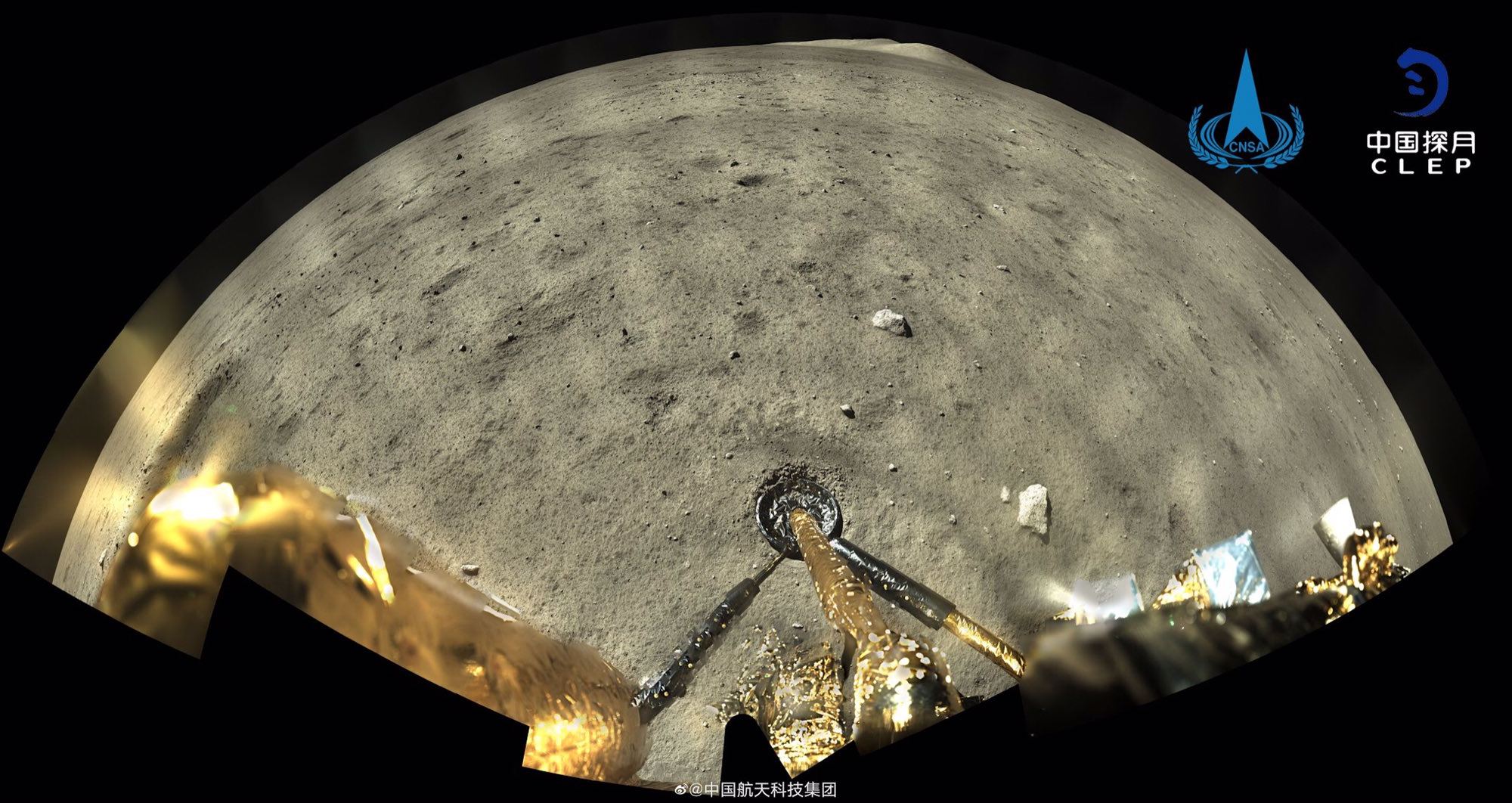China’s Chang’e-5 robotic moon lander is due to spend only two days collecting samples of lunar rock and soil before it sends its shipment on its way back to Earth, but it’s making the most of the time.
Just hours after landing on December 1st, the probe started using its robotic scoop and drill to dig up material at Mons Rümker, a lava dome in a region called Oceanus Procellarum, or the Ocean of Storms.
It’s also been sending back pictures and video, including this stunning view of the final minutes before touchdown. Watch how the camera tips straight down to focus on the target spot for the lander:
The lander is gathering scientific data about its surroundings, which are thought to have been formed through volcanic processes relatively late in the Moon’s geological history, around 1.2 billion years ago.
Chang’e-5’s scientific suite includes ground-penetrating radar as well as a spectrometer. But its main job is to get what are expected to be the youngest samples of lunar regolith ever collected back safely to Earth. The mission schedule calls for up to 2 kilograms of material to be stashed inside a rocket-powered ascent vehicle that’s sitting on top of the lander.
Even as the Chang’e-5 lander is documenting its surroundings, Twitter users are passing along imagery documenting how the lander is doing its job. Here’s a selection, starting with a panorama of the landing site:
Chang’e-5’s ascent vehicle is due to blast off on December 3rd, and then rendezvous with the orbiter that delivered the lander to lunar orbit and has been biding its time for the past few days. Although China has previously sent two robotic landers to the Moon, in 2013 and 2019, it’s never tried having a probe take off again from the lunar surface. Thus, the maneuvers from here on out represent uncharted territory for China’s space program.
After blastoff, the mission plan calls for the canister containing the lunar samples to be transferred from the ascent vehicle to a re-entry capsule that’s attached to the orbiter. A few days later, the orbiter will fire up its thrusters, leave lunar orbit and make the days-long journey back to Earth.
If all goes well, the re-entry capsule will be dropped off as the orbiter flies past Earth in mid-December. The capsule would make a parachute-assisted landing in Inner Mongolia, and the samples inside would be carefully retrieved for study in Chinese labs.
This would represent the first return of fresh samples from the Moon since the Soviet Luna 24 robotic probe accomplished the feat in 1976. NASA’s Apollo missions to the Moon brought back hundreds of kilograms of lunar rocks and soil between 1969 and 1972, but none of that material was as geologically recent as the stuff that Chang’e-5 is expected to bring back.
For that reason, NASA is anxious to have access to the scientific data resulting from the Chinese mission. “We hope everyone will benefit from being able to study this precious cargo that could advance the international science community,” Thomas Zurbuchen, NASA’s associate administrator for science, said in a tweet following Chang’e-5’s lunar landing.
NASA is getting ready for its own series of missions to the Moon as part of its Artemis program, with a crewed moon landing scheduled to occur as early as 2024. On December 3rd, just as Chang’e-5’s ascent vehicle is starting the homeward trip, NASA is expected to announce the selection of several commercial ventures that will collect and store lunar samples, and then transfer ownership of those samples to NASA.
Got a couple of hours? Check out this special report about the Chang’e-5 mission (with English-language translation) from China’s CGTN network:
Lead image: Panorama of the Chang’e-5 lander’s surroundings, with a landing leg in the foreground and a hill known as Louville Omega on the horizon. Credit: CNSA / CLEP via Thomas Appere on Twitter.

